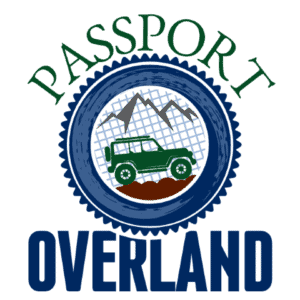
Different factors contribute to the gas mileage of your vehicle. They include factors such as the mass of the cargo, engine type and size, the type of the vehicle tire, and the type of road that the vehicle is using.
For example, if the engine of the vehicle is big or if the cargo is heavy, the gas mileage consumption will be high compared to when the engine is small, and the mass of cargo is light.
All of the above are important in their ways, but for now, the focus is on what to expect for gas mileage when it comes to different surfaces.
You want to enjoy your adventure when Overlanding without worrying about the gas mileage; it would work out better if you prepared yourself on the surfaces you would encounter before you reach your destination, for they will determine the amount of gas that your SUV will consume.
Will you use the road all the way, or will it reach a point where you may need to take your vehicle off the road? Failure to be prepared may be stuck, therefore not making it your destination.
When Overlanding, it is not unusual for you to end up in the woods, beaches, or even in the valley. In such places, the probability of getting a gas station or some help is almost 0.
Therefore, you know the different types of roads you can encounter when Overlanding is critical because it will prevent you from being stranded due to factors such as running out of gas.
Different Surfaces Encountered When Overlanding: Pavement, Dry Dirt, Muddy, Washboard, and Sandy.
When Overlanding, you will come across different surfaces along the way. We decided to keep it simple and describe the terrain that you may encounter as follows:
- Pavement-it is a road surface covered in asphalt concrete, and a good example is a driveway. In most cases, it is usually smooth, even though it is common to find some cracked pavements and have potholes. It is quite common in many places.
- Dry Dirt Road-it is also known as an unpaved road. It is made of native materials such as dirt, gravel and stones.
- Muddy-it normally forms after the soil has been mixed with water. The road is dirty dirt during normal times, but it now becomes a muddy dirt road after a rainfall. The soil in the muddy dirt can be loam or clay soil.
- Washboard Road –occurs from a formation of transverse ripples that occur on the surface of the gravel. Wash boarding takes place in a dry road material with repeated traffic. They are normally found in any place.
- Sandy Terrain-as the name suggests, this type of road is covered with sand. It is found in beaches, deserts, or some parts of the country.
Overcoming the above surfaces with no or minimum trouble to reach your camping adventure site depends on the model of vehicle you are using. Getting stuck or stranded during the journey is not something someone wishes. In most cases, no help will be readily available when they are out there in the woods or on sandy beaches in the middle of nowhere.
Pavement: Gas Mileage – Pickup Truck, SUV, and Crossover SUV
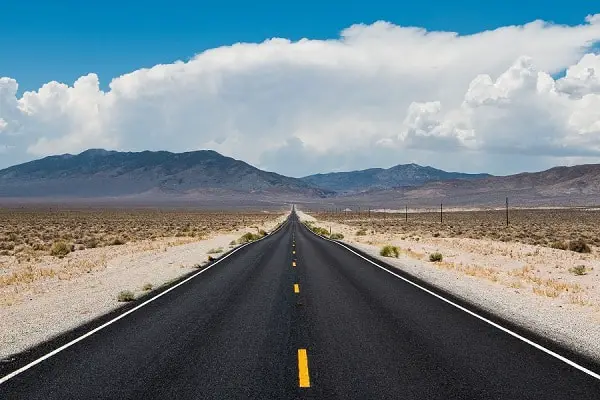
The gas mileage in pavement depends on two major factors in connection with the pavement, and they are as follows;
- Roughness is how bumpy the pavement is; it is mainly seen through cracks and potholes on the surface.
- Deflection-this is better referred to as bending of the pavement due to the vehicle’s weight. It is a condition that is pre-determined by how the road was constructed initially and entirely depends on the design of the road. Vehicles tend to consume a lot of gas mileage since they work extra harder when the pavement has a greater deflection.
Excess gas mileage can be reduced by maintaining smoother pavements, also lessening the amount of stiffness lessens the impact of deflection, therefore, saving gas.
As you plan to overland in places where the pavement is rough, know that the gas mileage will be high; therefore, it would be best to carry extra gas with you, or you can opt to use smoother roads which is a guarantee that you will save on gas. You will reach your destination as planned.
Another thing you need to know is that, in most cases, pavement roads have gas stations at some point.
Dry Road: Gas Mileage – Pickup Truck, SUV, Crossover SUV
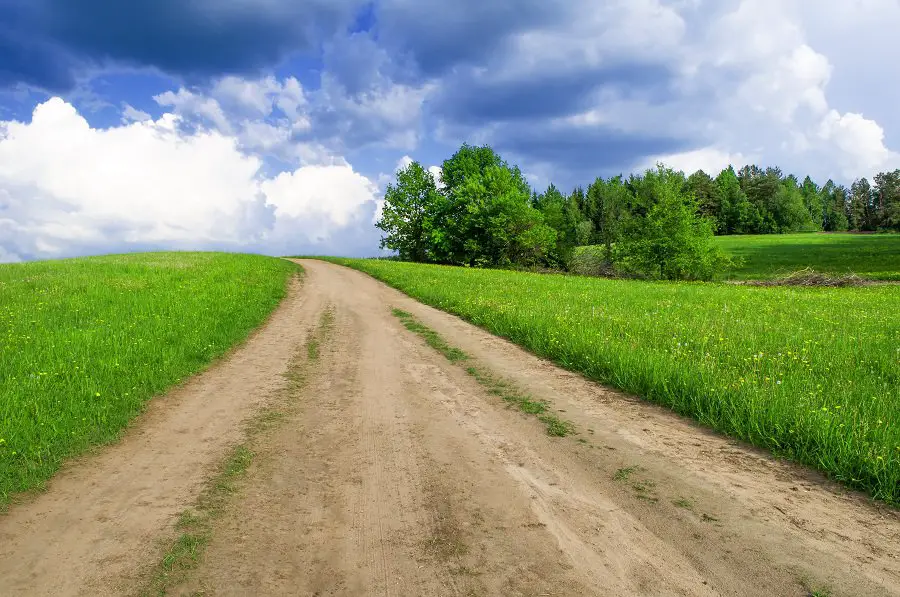
If you used a dry dirt road for your adventures, it would be best to ensure that your vehicle has gas full to the brim. The gas mileage on a dry dirt road is relatively high. As the tires roll along with the asphalt, a lot of heat is used up, making the SUV use a lot of gas due to the roughness of the surface.
However, you can minimize the amount of gas mileage by moving at a slow speed on the gravel. Less heat is being emitted as the tires contact the gravel when you do this. However, if you are always fascinated by speed, you do not have to restrict yourself by using a pace that is not enjoyable, yet seeking out adventures is your hobby.
Fill your vehicle to the brim and carry extra gas with you, then get to enjoy Overlanding on a dry dirt road. They are common almost in every part of the country since they are not expensive for maintenance. The possibility that you will come across a dry dirt road when Overlanding is very high.
Muddy: Gas Mileage – Pickup Truck, SUV, Crossover SUV
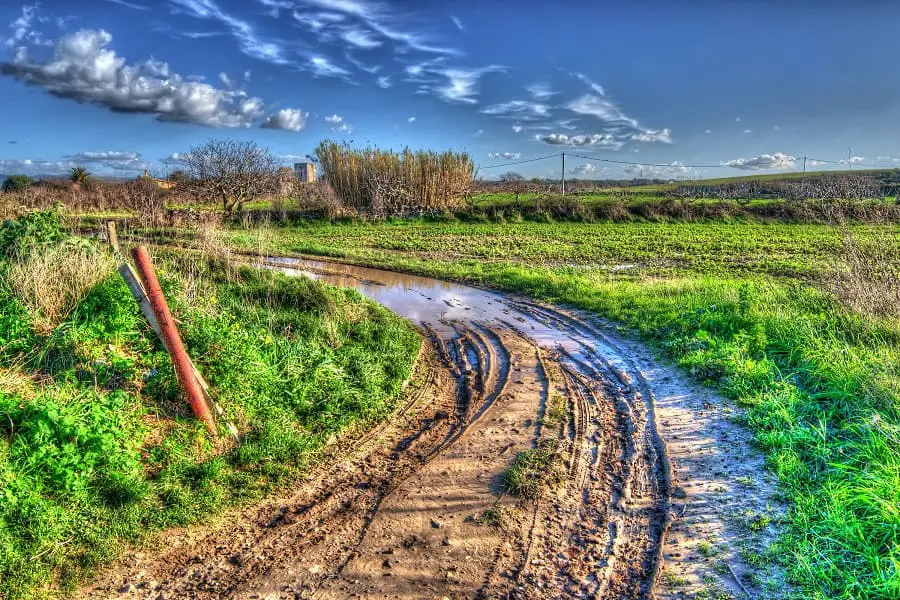
A muddy dirt surface can be in two forms; one with lots of water and another with less water but lots of mud. You should avoid driving your vehicle through a muddy dirt road because it will cause serious damage to your truck with time. It is so easy for the tires to get stuck in this surface type and can become a headache to get out of such a predicament.
When it comes to the one that has lots of water, a lot of gas mileage will be consumed as tires will have to push out a large amount of water as they roll on the way. Another thing is that water increases the amount of rolling resistance; even small dampness on the road after any rainfall will bring some amount of resistance to the tires making the vehicle consume a lot of energy.
If you are planning to overland during the rainy season, it may not seem like a great idea if you do not plan on spending an extra coin when it comes to gas.
Again, muddy dirt roads are somehow risky as vehicles get stuck easily, and for those that are big machines like pickup tracks, they may slide on the slippery surfaces and cause severe accidents. When your pick–up truck gets stuck, it will need a lot of energy for it to get out of that situation.
The more you press the acceleration pedal, the more energy is being consumed and the gas. The engine will work overtime as the vehicle tries to grip the road.
Washboard Surface: Gas Mileage – Pick up Truck, SUV, Crossover SUV
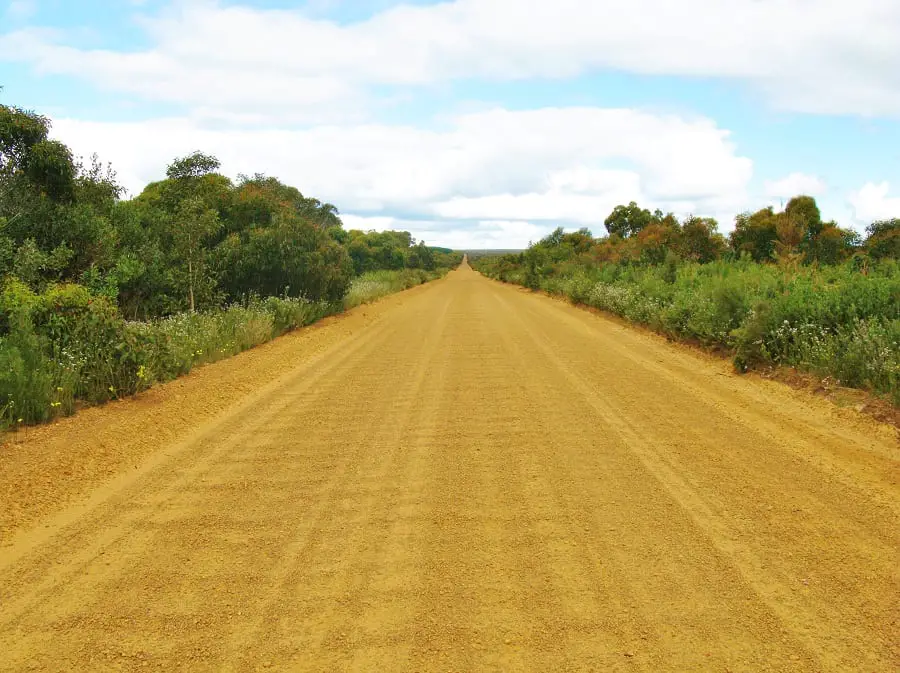
Washboard roads tend to occur after a car has severally passed and created a wavy pattern. In most cases, they are considered to be a nuisance and not safe as vehicles may not experience full contact with the ground, therefore, making it hard to break properly when required.
Washboard roads occur almost anywhere, and they are usually found in hot and dry areas. The three main causes of washboard roads are as follows;
- Traffic-Mostly you will find it at intersections, business entrances, driveways, or even after or before bends that are sharp. There are usually hard acceleration and braking in such places that tend to create the washboard. When a vehicle skids on the road for some time, some amount of gravel will be displaced, and if this process continues frequently, a washboard pattern is created.
- Poor quality surface- When a very heavy load passes on a surface made of poor quality materials, then wash boarding occurs. It can be sand, gravel, or even pavement.
- Lack of moisture-frequent rainfall minimizes the chances of wash boarding occurring.
In most cases, washboard roads have no complications as most of them are swift. This makes the amount of gas being consumed to be minimum. The good thing is that they are found almost anywhere
If you plan to use a washboard dirt road, you need not worry much about gas. Your vehicle even if it is an SUV or pick-up truck won’t be using unnecessary energy than what is required.
Sandy Terrain: Gas Mileage – Pickup Truck, SUV, Crossover SUV
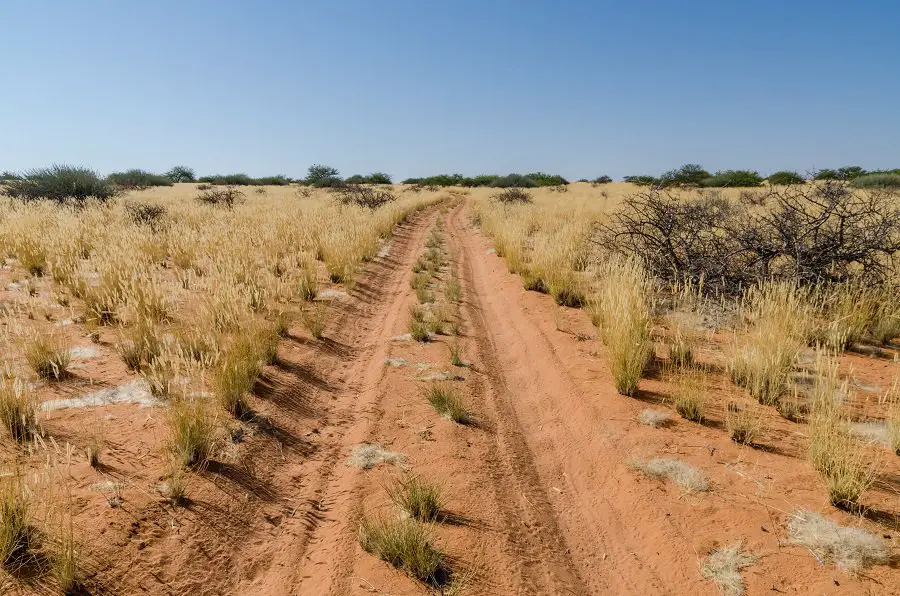
This surface may not be common in most parts of the world, but it would be best if you knew what you are likely to encounter and what to expect when it comes to gas mileage. Places where you are likely to encounter sandy terrain, are at the beaches.
If you are new to the sandy terrain, then there are two things you need to know before Overlanding.
- Sand that is soft needs a tire with low pressure; you can decide to go lower, but you need to drive carefully to prevent them from popping out.
- After the pressure in your tires has been lowered and they hit the hard stuff, the sidewalls will quickly flex, and the faster you drive, the more heat is being released, which shortens the lifespan of your tires, not forgetting to mention the high gas mileage.
One of the ways that you can maneuver around in sandy terrain is by airing down the tires. High-pressure tires are the best for highway driving, for they tend to maximize gas efficiency by minimizing the amount of friction taking place. However, friction becomes very desirable in the sandy terrain.
When the wheel of the vehicle skins deep into the sand, it spins and spins, digging and in the same process making a vicious cycle. Special skills are required to remove the wheel from the sand to get the vehicle moving, not forgetting that the vehicle will have used a lot of energy and gas.
Some places have no other type of soil other than sandy soil; therefore, it is always a good thing to be prepared if you come across that sandy terrain and have no other way. A good example is if you have planned to hold your anniversary, a birthday party at the beach, or you need to use the beach as your camping site.
In such circumstances, you can use the sandy terrain; therefore, much gas mileage is being used.
Final thoughts
Before Overlanding, it would be in your vehicle’s best interest if you did a little research on the terrain you will come across. That way, you will predict the amount of gas mileage your vehicle is likely to consume. From the above, you can tell that rough pavement, dry dirt roads, and sandy terrain consume lots of gas.
You can decide to use smoother pavements or drive slowly on dry dirt roads, and if those terrains are unavoidable, you can carry extra gas to be on the safe side. Though there are some countries and states where it is a crime to carry gas using a vessel such as a bottle or a bucket.
It is always good to know how a vehicle behaves in certain terrain as it will prepare you, and in the process of maneuvering along the terrain, it molds you to be a better driver.
During Overlanding, you can come across more than one of the aforementioned surfaces. In some instances, you can even use all of them, if not one or two. Whatever you encounter, have fun, be prepared, and be safe.
